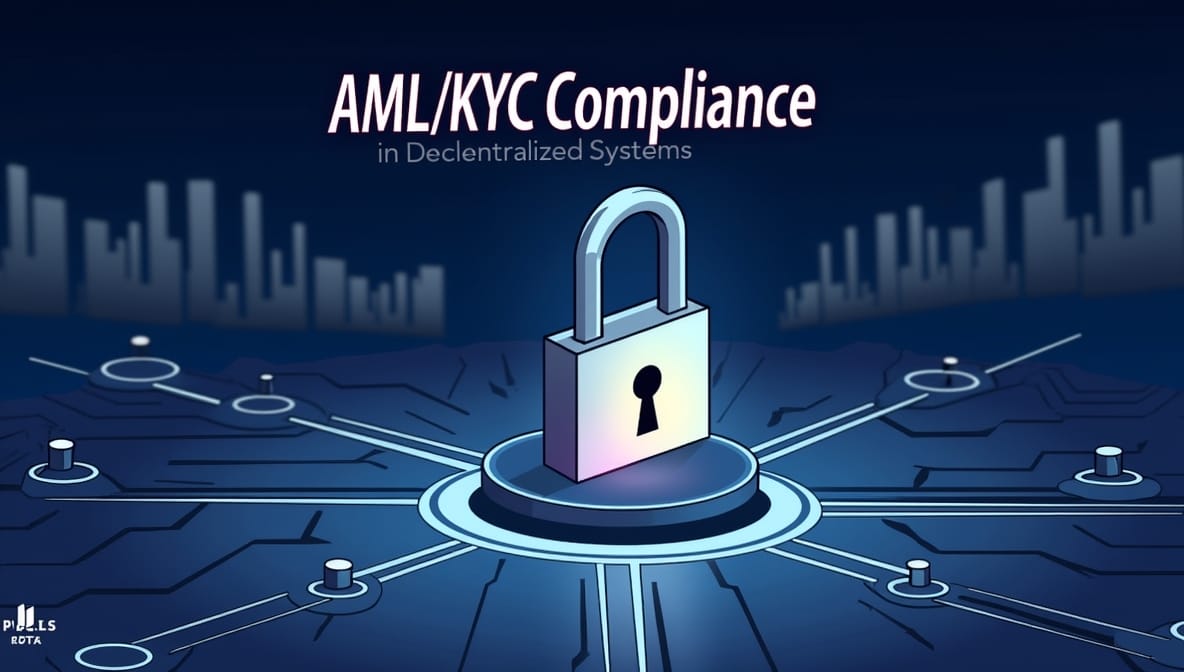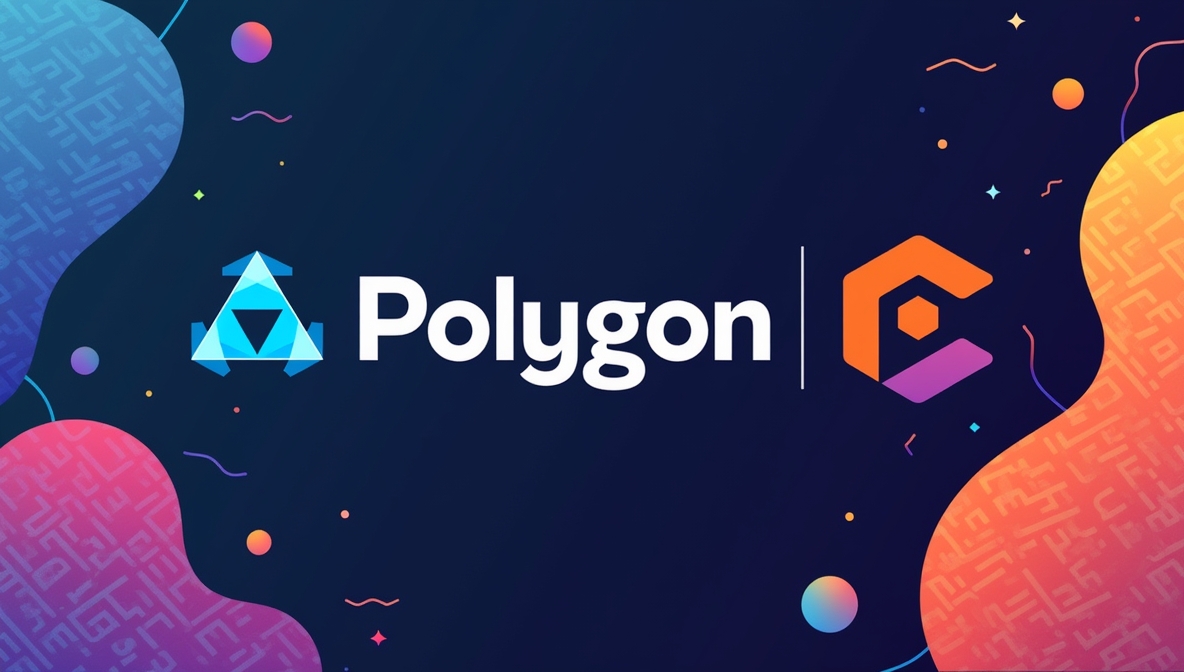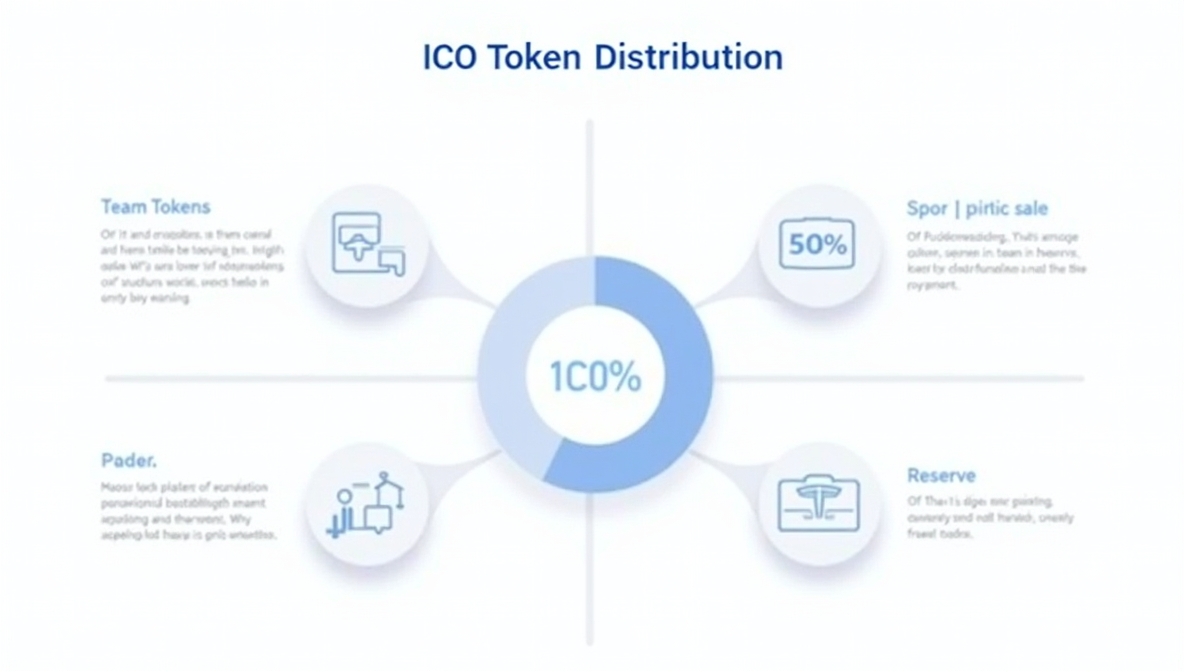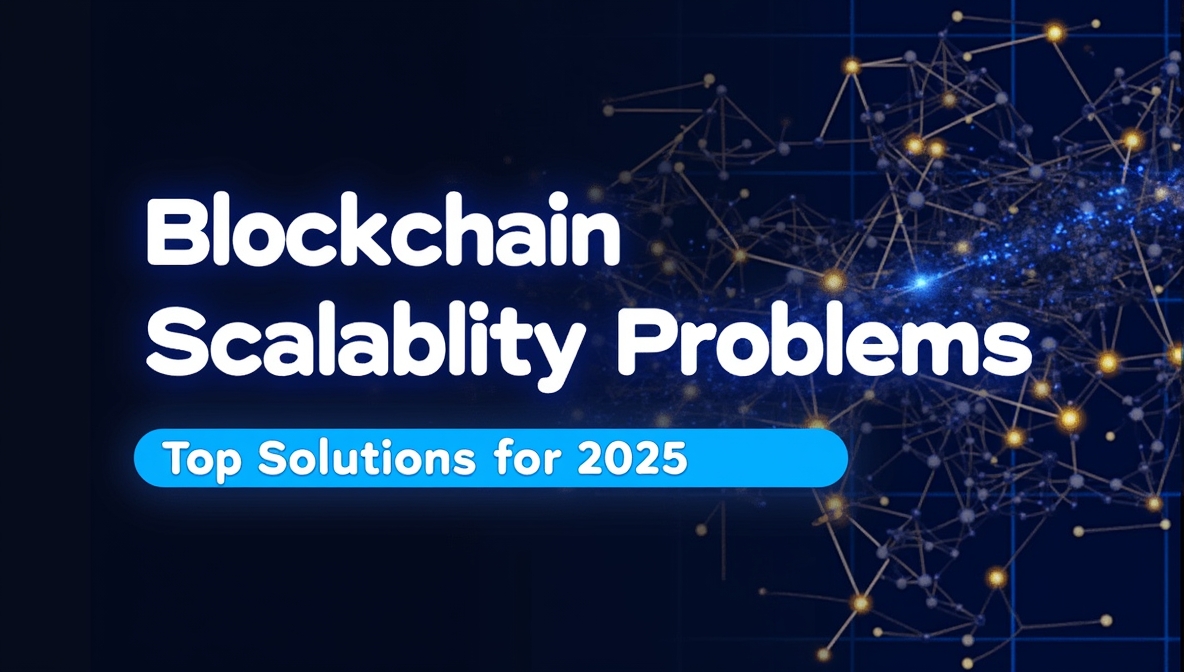Blockchain technology, initially celebrated for its disruptive potential, now faces a critical adoption phase. For businesses aiming to leverage its transformative power, a significant hurdle has emerged: regulatory issues for blockchain adoption. Are these regulations merely a temporary obstacle, or are known regulatory issues for blockchain adoption fundamentally impeding progress? The reality is complex. Understanding the regulatory challenges for blockchain adoption is no longer optional; it’s essential for navigating the path to successful implementation and realizing blockchain’s benefits. This article provides a direct and insightful analysis of the key regulatory roadblocks. We dissect the 9 most critical regulatory issues for blockchain adoption, offering actionable intelligence to help businesses understand, adapt, and thrive in this evolving landscape. Consider this your definitive guide to mastering blockchain regulation and unlocking its transformative potential.
Global regulatory fragmentation: A Major Impetus for Adoption Stagnation?

Deploying a technology across borders becomes exponentially complex when regulatory frameworks diverge dramatically. This is the current state of blockchain adoption, hampered by global regulatory fragmentation. Instead of a cohesive international approach, a disparate collection of regulations is emerging, with each jurisdiction establishing unique rules for blockchain and cryptocurrencies. This regulatory mosaic presents significant challenges for achieving widespread blockchain adoption on a global scale.
Jurisdictional Variance: The Challenge of Divergent Regulatory Approaches
This fragmentation creates substantial obstacles for businesses pursuing international blockchain adoption. Compliance deemed sufficient in a jurisdiction with progressive blockchain policies may be insufficient or even non-compliant in another region with stricter regulations. For example, while certain nations like Switzerland and Singapore have proactively cultivated blockchain innovation through enabling frameworks, others, such as South Korea and China, have implemented more restrictive or prohibitive measures. This lack of regulatory harmonization is more than an inconvenience; it represents a fundamental impediment to seamless global operations and scalability.
Elevated Compliance Overheads: Interpreting and adhering to a multitude of regulatory regimes necessitates specialized legal expertise and significant financial investment. These costs can render blockchain adoption economically unfeasible, particularly for smaller organizations and nascent ventures, thereby stifling innovation and limiting market entry.
Operational Complexity Amplification: Developing blockchain solutions that maintain compliance across diverse and often conflicting jurisdictional requirements introduces substantial operational complexity. It necessitates customized approaches for each region, increasing development time, resource allocation, and deployment challenges.
Legal Uncertainty and Risk Escalation: The absence of consistent and predictable regulations breeds significant legal uncertainty. Businesses struggle to accurately assess risk exposure and make informed strategic decisions regarding blockchain adoption when the legal parameters are ambiguous and subject to rapid change.
Research from PwC indicates that over 48% of business leaders identify regulatory uncertainty as a primary barrier to broader blockchain adoption. This global regulatory fragmentation is not merely slowing progress; it is actively inhibiting international collaboration and hindering the realization of blockchain’s global transformative potential.
In this fragmented regulatory environment, proactive regulatory intelligence is paramount. Engage legal counsel specializing in international blockchain regulations to continuously monitor regulatory developments in key jurisdictions relevant to your business operations. Develop adaptive strategies that can accommodate regulatory variations and be prepared to adjust your approach as regulations evolve. Proactive monitoring and adaptation are crucial for navigating this complex landscape.
For a deeper understanding of how asset tokenization regulations vary across jurisdictions, refer to our in-depth guide: Asset Tokenization Regulation.
Unclear regulatory frameworks: Impeding Clarity and Adoption Momentum
Beyond the complexities of global regulatory fragmentation, another significant impediment to blockchain adoption is the prevalence of unclear regulatory frameworks. In numerous jurisdictions, regulatory bodies are still in the process of defining and classifying blockchain technology and its applications. Fundamental questions remain unanswered: How should cryptocurrencies be categorized – as securities, commodities, or currencies? How do existing financial regulations apply to decentralized finance (DeFi) protocols? This lack of definitive regulatory guidance creates a climate of uncertainty, hindering investment and slowing down the pace of blockchain adoption.
Emerging Frameworks: Glimmers of Progress Amidst Persistent Ambiguity
This ambiguity arises from the disruptive nature of blockchain, which challenges traditional regulatory classifications. Its decentralized, borderless, and often pseudonymous characteristics do not readily align with established legal frameworks designed for centralized, geographically bound, and easily identifiable entities. However, some jurisdictions are making strides towards establishing clearer regulatory parameters.
EU’s MiCA Regulation: A Harmonizing Force? The Markets in Crypto-Assets (MiCA) regulation, which was formally adopted by the EU Parliament in April 2023 and became fully applicable in December 2024, represents a groundbreaking effort to establish a unified regulatory framework for crypto-assets across the European Union. MiCA provides clear definitions for various categories of crypto-assets, sets regulatory requirements for issuers and service providers, and enforces strict measures to enhance consumer protection and financial stability. Notably, MiCA mandates licensing requirements for crypto service providers (CASPs) and enforces enhanced disclosure obligations for stablecoin issuers. While MiCA offers a significant step toward regulatory harmonization, its effectiveness will depend on consistent enforcement across EU member states, as well as its ability to evolve with future developments in decentralized finance (DeFi) and non-fungible tokens (NFTs), which are currently outside its scope but may be addressed in future regulatory updates.
Singapore’s Activity-Based Regulation: A Pragmatic Model? Singapore has adopted a pragmatic, activity-based regulatory approach under its Payment Services Act. This framework focuses on regulating specific activities related to crypto-assets rather than rigidly defining the underlying technology, providing a degree of flexibility while ensuring consumer protection and financial system integrity. However, even in Singapore, the application of these regulations to rapidly evolving sectors like DeFi and NFTs remains an iterative process, requiring continuous refinement and clarification.
Consequences of Regulatory Uncertainty:
Innovation Deterrence: The absence of clear regulatory guidelines can significantly deter innovation. Businesses become hesitant to commit resources to blockchain adoption when the legal and regulatory landscape remains undefined. Fear of inadvertent non-compliance can lead to a cautious “wait-and-see” approach, slowing down technological advancement and market development.
Enforcement Inconsistencies: Regulatory ambiguity can result in inconsistent enforcement actions. Businesses operating in good faith may still face penalties if regulatory bodies interpret existing laws in unexpected or retroactive ways, creating an uneven playing field and increasing operational risk.
Investment Aversion: Investors are typically risk-averse, particularly when evaluating ventures operating within regulatory grey areas. Clear, predictable regulations are essential for attracting institutional capital and fostering sustainable growth in the blockchain sector. Regulatory uncertainty acts as a significant impediment to attracting necessary investment.
Do not passively await regulatory clarity. Actively participate in shaping the regulatory discourse. Engage in constructive dialogue with regulatory bodies, contribute to industry consultations, provide informed feedback on proposed regulations, and proactively educate policymakers about the technical nuances and potential benefits of blockchain technology. Industry-led engagement is crucial for fostering informed and balanced regulatory frameworks.
AML/KYC Compliance in Decentralized Systems: A Regulatory Conundrum

Anti-Money Laundering (AML) and Know Your Customer (KYC) compliance are fundamental pillars of financial regulation globally. However, applying these established frameworks to the inherently decentralized architecture of blockchain systems presents significant regulatory issues for blockchain adoption. The core tenets of blockchain – decentralization, pseudonymity, and borderless transactions – directly challenge the centralized, identity-centric methodologies of traditional AML/KYC protocols.
Decentralization and Gatekeeper Absence: A Core Regulatory Challenge
Traditional AML/KYC frameworks rely on intermediaries – such as banks and financial institutions – to act as gatekeepers. These entities are responsible for verifying customer identities and monitoring transaction activity for suspicious patterns. In decentralized blockchain systems, particularly within the rapidly expanding DeFi ecosystem, these intermediaries are often intentionally absent. This absence raises fundamental regulatory questions:
Defining AML/KYC Responsibility in Decentralized Networks: In a decentralized system, who assumes responsibility for AML/KYC compliance? Is it the protocol developers who create the underlying code? The node operators who maintain network infrastructure? The individual users engaging in transactions? Or a combination thereof? Defining clear lines of responsibility is a significant regulatory challenge.
KYC Implementation in Pseudonymous Environments: How can KYC procedures be effectively implemented in environments designed for pseudonymity? While blockchain addresses are pseudonymous rather than anonymous, definitively linking these addresses to real-world identities and ensuring ongoing identity verification presents substantial technical and logistical hurdles.
Cross-Border Transaction Monitoring in Decentralized Networks: How can cross-border transactions be effectively monitored and regulated within a decentralized, inherently global system? Blockchain transactions can traverse international borders instantaneously, making it exceptionally difficult for national regulators to effectively track and control potentially illicit financial flows within their jurisdictional boundaries.
Blockchain Analytics and Identity Solutions: Emerging Compliance Tools
To address these challenges, a specialized industry focused on blockchain analytics and identity verification tools is rapidly developing. These innovative tools employ sophisticated techniques to bridge the gap between decentralized systems and regulatory compliance requirements:
Transaction Pattern Analysis and Anomaly Detection: These tools analyze blockchain transaction data at scale, identifying patterns and anomalies that may indicate illicit activities such as money laundering, terrorist financing, or sanctions evasion.
Address De-pseudonymization and Entity Association: Utilizing open-source intelligence, advanced data analytics, and collaboration with law enforcement agencies, these tools attempt to link pseudonymous blockchain addresses to real-world entities, enhancing transparency and accountability.
Decentralized Identity and Privacy-Preserving KYC: The industry is exploring decentralized identity solutions and privacy-enhancing technologies like zero-knowledge proofs to develop KYC mechanisms specifically tailored for decentralized environments. These solutions aim to balance robust compliance with the principles of user privacy inherent in blockchain systems.
The Compliance-Decentralization Balance:
The critical challenge lies in achieving a delicate balance between robust AML/KYC compliance and preserving the core principles of decentralization and privacy that underpin blockchain technology. Overly stringent or poorly designed regulations could stifle innovation, drive legitimate activity towards less regulated platforms, and ultimately undermine the intended benefits of blockchain.
Risk-Based AML/KYC Strategies: Adopt a risk-based approach to AML/KYC compliance. Prioritize resources and efforts towards mitigating the highest risks based on a thorough assessment of the specific use case and operational context of your blockchain application. Integrate blockchain analytics tools to enhance transaction monitoring capabilities and consider incorporating decentralized identity solutions to streamline KYC processes while respecting user privacy. A risk-proportionate and technology-informed approach is essential for effective and sustainable compliance.
Data Privacy vs. Blockchain Immutability: A Regulatory Paradox

Data privacy concerns represent another significant category of regulatory issues for blockchain adoption, particularly in the context of comprehensive data protection regulations like the European Union’s General Data Protection Regulation (GDPR) and similar legislation globally. The inherent immutability of many blockchains – the principle that data, once recorded, cannot be altered or erased – directly conflicts with the “right to be forgotten” and other core data protection principles enshrined in these regulations.
Immutability and Erasure Conflicts: A Fundamental Regulatory Tension
Blockchain’s immutability, often touted as a key advantage for data integrity and transparency, becomes a significant liability when viewed through the lens of modern data privacy laws. GDPR, for instance, grants individuals the fundamental right to request the erasure of their personal data under specific circumstances. However, directly deleting data from an immutable blockchain is technically infeasible, creating a direct conflict between technological capability and regulatory mandate.
Strategies for Privacy-Respecting Blockchain Implementations
Off-Chain Data Storage with Blockchain Anchoring: Store sensitive personal data off-chain, in traditional databases or secure storage solutions, while using the blockchain to record cryptographic hashes of this data. This approach leverages blockchain’s integrity for transaction verification and audit trails without directly storing personal data on the immutable ledger, allowing for compliance with data erasure requests.
Data Encryption and Access Control Mechanisms: Encrypt sensitive data before storing it on-chain, rendering it unintelligible without decryption keys. Implement robust access control mechanisms to restrict access to decryption keys and limit data visibility to authorized parties. While encryption enhances privacy, it does not fully address the immutability challenge, as encrypted data still persists on the blockchain.
Permissioned Blockchains for Enhanced Data Control: Utilize permissioned or private blockchains where data access and modification are governed by a central authority or a defined consortium of participants. This approach provides greater control over data management and facilitates compliance with data privacy regulations, but it compromises some of the decentralization benefits associated with public, permissionless blockchains.
Privacy-Enhancing Technologies (PETs) Integration: Explore and integrate privacy-enhancing technologies (PETs) such as zero-knowledge proofs, homomorphic encryption, and secure multi-party computation. These technologies enable data processing and verification on the blockchain while minimizing data exposure and enhancing user privacy, offering potential pathways to reconcile blockchain functionality with stringent data privacy requirements.
Privacy by Design Imperative: Adopt a “privacy by design” approach from the outset of any blockchain project. Integrate privacy considerations into the core architecture and functionality of your blockchain applications. Carefully assess what data truly needs to be stored on-chain, implement robust data protection measures, and establish clear protocols for complying with data privacy regulations throughout the entire data lifecycle. Proactive privacy planning is no longer optional; it is a fundamental regulatory and ethical requirement.
Smart Contract Liability: Navigating the Uncharted Legal Territory
Smart contracts, self-executing code deployed on a blockchain, offer transformative potential for automating agreements and streamlining processes. However, the legal implications of smart contract liability remain largely undefined, posing significant regulatory issues for blockchain adoption. When a smart contract malfunctions or produces unintended outcomes, the critical question of legal accountability arises: Who is responsible when code execution leads to financial loss or other damages?
Legal Ambiguity Surrounding Code-Based Agreements
Traditional contract law operates within a well-established framework of legal principles for determining liability, focusing on concepts such as intent, negligence, and breach of contract. However, smart contracts, as code-based agreements, operate outside this traditional framework, creating a legal vacuum and raising novel questions:
“Code is Law” Doctrine: Oversimplification of Legal Reality: The maxim “code is law” suggests that the smart contract code itself constitutes the entirety of the agreement, and liability should be determined solely by the deterministic execution of that code. However, this simplistic view disregards the complexities of real-world contracts, legal interpretation, and the potential for unforeseen circumstances or coding errors to lead to unintended and legally problematic outcomes.
Absence of Intermediaries and Human Oversight: Smart contracts are designed to execute autonomously, without human intervention or oversight at the point of execution. This raises complex questions regarding responsibility for errors, vulnerabilities, or unintended consequences arising from the code, particularly if the contract was developed by a third party or is based on open-source code with multiple contributors.
Transaction Irreversibility and Dispute Resolution Challenges: Once a smart contract executes and transactions are recorded on the blockchain, they are typically irreversible. This immutability makes it exceedingly difficult to rectify errors, resolve disputes, or unwind transactions after execution, amplifying the potential impact of smart contract failures and necessitating robust dispute resolution mechanisms.
Liability Scenarios and Legal Uncertainty
Coding Errors and Vulnerabilities: Liability for Flawed Code: If a smart contract contains coding errors, bugs, or security vulnerabilities that result in financial losses or other damages, who is legally liable? Is it the developer who wrote the flawed code, the entity that deployed the contract, the users who interacted with it, or potentially all parties involved? Determining liability in cases of code-based failures is legally complex and largely untested.
Unforeseen Circumstances and Force Majeure in Smart Contracts: Traditional contracts often include “force majeure” clauses to address unforeseen events or circumstances beyond the parties’ control. How are these concepts translated and applied to smart contracts, which are designed to execute deterministically and automatically, regardless of external events or changing circumstances that might render the contract’s original intent invalid or impractical?
Jurisdictional Complexity in Global Smart Contract Deployments: Smart contracts can be deployed and executed globally, transcending geographical boundaries and legal jurisdictions. This raises intricate jurisdictional questions: Which legal system’s laws govern a smart contract dispute? Determining the applicable jurisdiction and enforcing legal judgments across borders can be a complex and costly undertaking.
The Need for Legal Frameworks and Best Practices
The current lack of clear legal frameworks for smart contract liability creates significant uncertainty and risk, hindering broader blockchain adoption, particularly in regulated industries where legal clarity and accountability are paramount. There is a growing need for:
Developing Standardized Legal Frameworks for Smart Contracts: Legislative and regulatory bodies need to develop standardized legal frameworks specifically designed to address the unique characteristics of smart contracts. These frameworks should provide clarity on liability attribution, enforceability, dispute resolution mechanisms, and the legal status of code-based agreements.
Promoting Smart Contract Auditing and Verification Standards: Industry-wide adoption of best practices for smart contract development, including mandatory security auditing and formal verification processes, is crucial. Rigorous auditing and verification can proactively minimize coding errors, identify vulnerabilities, and enhance the overall security and reliability of smart contracts before deployment.
Establishing Dispute Resolution Mechanisms for Smart Contract Disputes: Exploring and establishing alternative dispute resolution (ADR) mechanisms specifically tailored for smart contract disputes is essential. This could include on-chain arbitration protocols, mediation platforms specializing in code-based agreements, or other innovative approaches to facilitate efficient and equitable resolution of conflicts arising from smart contract execution.
- Treat smart contracts as legally binding agreements with the same level of legal rigor as traditional contracts. Prioritize security and comprehensive legal review throughout the entire smart contract development lifecycle. Engage legal counsel with specialized expertise in smart contract law to meticulously review contract terms, assess potential liability risks, and ensure legal compliance. Invest in thorough, independent security audits and rigorous testing protocols to minimize coding errors and identify vulnerabilities before deploying smart contracts to a live environment. Proactive legal and security measures are essential for mitigating smart contract liability risks and fostering responsible innovation.
IP Rights Management on Blockchain: Balancing Openness and Protection
Intellectual Property (IP) rights and blockchain intersect in complex and often paradoxical ways, creating unique regulatory issues for blockchain adoption, particularly in sectors where IP protection is paramount. While blockchain offers innovative tools for managing and potentially enhancing IP rights, its decentralized and inherently open nature also presents challenges to traditional IP protection models.
Challenges to Conventional IP Protection in Decentralized Ecosystems
Decentralized Enforcement of IP Rights: Traditional IP systems rely on centralized registries, government enforcement agencies, and geographically defined jurisdictions for IP right enforcement. Blockchain’s decentralized architecture challenges this centralized model, making it more difficult to centrally control and enforce IP rights across distributed and borderless networks.
Open-Source and Permissionless Environments: IP Control Limitations: Many blockchain projects embrace open-source principles and permissionless access, making it inherently challenging to restrict access to and commercial use of underlying code, algorithms, and technological innovations that may constitute valuable IP. Balancing open innovation with effective IP protection remains a significant challenge.
Tokenization of IP Assets: Legal and Regulatory Uncertainties: The tokenization of IP assets – representing patents, trademarks, or copyrights as digital tokens on a blockchain – offers new possibilities for fractional ownership and streamlined IP management. However, it also raises complex legal and regulatory questions regarding the legal recognition, transferability, and enforceability of IP rights when represented in tokenized form.
Blockchain-Based Solutions for Enhanced IP Management
Despite these challenges, blockchain also offers promising solutions and innovative tools for enhancing IP management and potentially strengthening IP protection mechanisms:
Digital Rights Management (DRM) via Blockchain: Transparency and Control: Blockchain can be utilized to create transparent, auditable, and more efficient systems for managing digital rights. This includes tracking content usage, automating royalty payments through smart contracts, and enforcing licensing agreements in a decentralized and verifiable manner.
Blockchain-Based Proof of Ownership and Provenance: Immutable Records of Creation: Blockchain’s immutable ledger provides an irrefutable, timestamped record of ownership and provenance for IP assets. This can be invaluable for combating counterfeiting, verifying originality, and establishing clear chains of custody for IP assets.
Streamlined IP Transactions with Smart Contracts: Efficiency and Automation: Smart contracts can automate complex IP licensing agreements, royalty distribution, and IP asset transfers, significantly reducing administrative overhead, minimizing disputes, and improving efficiency in IP transactions.
Legal and Regulatory Implications of IP Tokenization
Tokenizing IP assets, such as patents, trademarks, or copyrights, involves representing these traditionally intangible rights as digital tokens on a blockchain. This innovative approach raises a series of legal and regulatory questions that are still being explored:
Legal Recognition of IP Tokens as Valid Rights Representations: Are IP tokens legally recognized as valid and legally binding representations of the underlying IP rights they are intended to represent? The legal validity and enforceability of IP tokens remain largely untested and undefined in most legal systems.
Transferability and Enforceability of Tokenized IP Rights: How are IP tokens legally transferred, and how are the underlying IP rights effectively enforced when represented in a tokenized format? Existing IP laws and enforcement mechanisms may not be readily adaptable to the novel concept of tokenized assets and decentralized IP management.
Regulatory Classification of IP Tokens: Securities vs. Utility Tokens: How will regulators classify IP tokens? Will they be categorized as securities, utility tokens, or a new asset class altogether? The regulatory classification of IP tokens will significantly impact the applicable legal and compliance requirements for their issuance, trading, and use.
- Consider adopting hybrid IP protection strategies that strategically combine traditional IP protection mechanisms (patents, trademarks, copyrights) with blockchain-based solutions to enhance IP management and address specific challenges. Utilize blockchain to improve transparency, establish provenance, and streamline administrative processes in IP management, while still relying on existing legal frameworks for core IP enforcement and dispute resolution. Carefully evaluate the legal and regulatory implications of tokenizing IP assets and seek expert legal counsel before implementing tokenization strategies to mitigate potential risks and ensure compliance.
Scalability vs. Regulatory Compliance: A Critical Infrastructure Challenge
Scalability remains a persistent technical challenge for many blockchain platforms. As transaction volumes increase, some blockchains experience performance degradation, leading to slower transaction processing times, increased transaction fees, and network congestion. This fundamental scalability vs. regulatory compliance tension presents significant regulatory issues for blockchain adoption, particularly in sectors requiring high transaction throughput and low latency to meet both operational and regulatory demands.
Scalability Limitations as a Barrier to Mainstream Adoption
Many early blockchain designs prioritized decentralization and robust security over raw scalability. This design choice has resulted in inherent limitations on transaction processing capacity, hindering their ability to support high-volume, mainstream applications. For example, Bitcoin’s transaction throughput is limited to approximately 7 transactions per second, while Ethereum, although more scalable, still faces performance constraints under heavy network load.
Regulatory Compliance Demands Exacerbate Scalability Pressures
Regulatory requirements, such as stringent AML/KYC procedures, comprehensive data privacy protocols, and detailed reporting obligations, can further exacerbate blockchain scalability challenges. Implementing these essential compliance measures often necessitates additional data processing, verification steps, and on-chain transactions, increasing the overall load on the blockchain network and potentially amplifying existing scalability bottlenecks.
Scalability Solutions and Technological Advancements
To address the scalability challenge and facilitate wider blockchain adoption, a range of innovative scalability solutions are being developed and deployed:
Layer 2 Scaling Solutions: Off-Chain Transaction Processing: Layer 2 solutions, such as the Lightning Network for Bitcoin and rollups for Ethereum, operate on top of the main blockchain (Layer 1). They process the majority of transactions off-chain, only periodically settling aggregated transaction batches on the main chain. This approach significantly increases transaction throughput and reduces transaction fees on the main Layer 1 blockchain.
Sidechains and Parallel Blockchain Architectures: Scalable Interoperability: Sidechains are independent blockchains designed to be interoperable with a main chain. They can be customized with different consensus mechanisms and optimized scalability features, allowing for specialized applications and increased overall transaction processing capacity across interconnected blockchain networks.
Sharding: Network Partitioning for Parallel Processing: Sharding involves partitioning a blockchain network into smaller, independent shards, each processing a subset of transactions in parallel. This parallel processing approach has the potential to dramatically improve scalability by distributing the transaction load across multiple shards, enabling significantly higher overall throughput.
Consortium and Private Blockchains: Scalability through Centralized Control: Permissioned or private blockchains, often deployed in enterprise settings, can achieve higher scalability compared to public blockchains by limiting the number of participating nodes and utilizing more efficient, less resource-intensive consensus mechanisms suitable for controlled environments.
Balancing Scalability, Decentralization, and Security
The key challenge is to achieve the necessary scalability to support mainstream blockchain adoption without compromising the core principles of decentralization and robust security that underpin blockchain’s value proposition. Layer 2 solutions and sharding represent promising approaches to strike this balance, while consortium and private blockchains often prioritize scalability and centralized control over the full decentralization offered by public, permissionless networks. The optimal scalability solution often depends on the specific application requirements and the relative importance of decentralization, security, and throughput.
Scalability and Architecture Selection Strategies: Carefully evaluate your specific scalability and regulatory compliance requirements when selecting a blockchain platform or architecture for your project. For applications demanding high transaction throughput and stringent regulatory compliance, explore Layer 2 solutions, sidechains, or permissioned blockchain architectures. For applications where decentralization and censorship resistance are paramount, be mindful of potential scalability limitations and consider the inherent trade-offs between scalability, decentralization, and security.
Emerging Regulatory Trends: Shaping the Future of Blockchain Governance
The regulatory landscape for blockchain technology is in a state of continuous evolution. Understanding emerging regulatory trends is crucial for businesses navigating the complex regulatory issues for blockchain adoption and proactively preparing for future regulatory requirements. While specific regulations vary across jurisdictions, several common themes are emerging globally, indicating the direction of blockchain governance.
Key Global Regulatory Developments and Policy Directions
Heightened Focus on Consumer and Investor Protection: Regulatory bodies worldwide are increasingly prioritizing consumer and investor protection in the rapidly expanding crypto-asset market. This translates to stricter measures aimed at combating fraud, preventing scams, addressing market manipulation, and enhancing transparency for participants in the crypto ecosystem.
Financial Stability and Systemic Risk Mitigation: Concerns regarding the potential impact of crypto-assets on financial stability are driving increased regulatory scrutiny. Regulators are actively exploring mechanisms to mitigate systemic risks that crypto-assets might pose to the broader financial system and ensure its resilience in the face of growing crypto adoption and interconnectedness.
Global AML/KYC Harmonization and Interoperability: International efforts to harmonize Anti-Money Laundering (AML) and Know Your Customer (KYC) regulations for crypto-assets are gaining momentum. The Financial Action Task Force (FATF) recommendations for virtual asset service providers (VASPs) are increasingly being implemented by jurisdictions globally, promoting greater regulatory convergence and cross-border compliance.
Regulatory Sandboxes and Innovation Hubs for Controlled Experimentation: Numerous jurisdictions are establishing regulatory sandboxes and innovation hubs to foster responsible blockchain innovation while providing a controlled environment for businesses to test novel technologies and business models under regulatory supervision. These initiatives aim to strike a balance between promoting technological advancement and managing potential risks through controlled experimentation.
Central Bank Digital Currencies (CBDCs) and the Future of Monetary Systems: Central banks globally are actively exploring the potential issuance of Central Bank Digital Currencies (CBDCs), digital forms of fiat currencies issued and backed by central banks. CBDCs could fundamentally reshape payment systems, monetary policy, and financial infrastructure, and their regulatory frameworks are currently under intensive development and international coordination.
Regulatory Sandboxes: Fostering Innovation in a Controlled Environment
Regulatory sandboxes provide a valuable framework for fostering blockchain innovation while mitigating regulatory uncertainty. They offer a controlled environment for businesses to test innovative blockchain solutions under regulatory supervision, providing several key benefits:
Reduced Regulatory Uncertainty and Enhanced Clarity: Sandboxes provide businesses with greater clarity on regulatory expectations and allow them to test their products and services for compliance in a controlled setting, reducing the risk of inadvertent non-compliance and fostering regulatory certainty.
Accelerated Innovation Cycles and Faster Time to Market: Participation in regulatory sandboxes can potentially accelerate the time to market for innovative blockchain products and services by streamlining the regulatory approval process and providing a more efficient pathway to regulatory compliance.
Facilitating Regulatory Dialogue and Knowledge Exchange: Sandboxes foster direct and constructive dialogue between regulators and technology innovators, enabling regulators to gain deeper insights into blockchain technology and its applications, while innovators receive valuable feedback and guidance on navigating the regulatory landscape and aligning their innovations with regulatory expectations.
- Maintain continuous monitoring of global regulatory developments in the blockchain and crypto-asset space. Actively track publications from international regulatory bodies like FATF and the Financial Stability Board (FSB), as well as regulatory announcements from key jurisdictions relevant to your business operations. If you are developing innovative blockchain solutions, consider participating in relevant regulatory sandboxes to test your products, engage directly with regulators, and contribute to shaping a more informed and innovation-friendly regulatory environment.
Tokenova: Your Trusted Partner in Blockchain Compliance
Navigating the ever-evolving landscape of blockchain regulation can be overwhelming. Unclear frameworks, compliance risks, and jurisdictional challenges shouldn’t hold back your innovation. Tokenova is here to help.
As industry leaders in blockchain regulatory compliance, we provide expert guidance tailored to your needs. From AML/KYC strategies to smart contract legal audits, we empower businesses to confidently navigate the regulatory maze and stay ahead of evolving policies.
Why Choose Tokenova?
✅ Global Regulatory Expertise – Stay compliant across multiple jurisdictions with our in-depth legal insights.
✅ Smart Contract Auditing & Risk Assessment – Secure your blockchain applications with rigorous legal and security checks.
✅ Tailored Compliance Strategies – We don’t believe in one-size-fits-all solutions. Get customized compliance frameworks for your blockchain project.
✅ Seamless Implementation Support – Ensure your business remains compliant without disrupting innovation.
Don’t let regulations slow you down! Work with Tokenova and unlock blockchain’s full potential while staying legally protected.
Visit us at www.tokenova.co to get started today!
Conclusion: Collaborative Regulatory Frameworks for Sustainable Blockchain adoption
The known regulatory issues for blockchain adoption are multifaceted and present significant challenges for businesses seeking to leverage this transformative technology. From the complexities of global regulatory fragmentation and the ambiguity of unclear frameworks to the intricacies of AML/KYC compliance, data privacy considerations, and the uncharted legal territory of smart contract liability, navigating the regulatory landscape requires careful planning, proactive engagement, and a commitment to robust compliance.
However, it is crucial to recognize that effective regulation is not inherently antithetical to innovation. Well-designed, forward-looking regulations can foster trust, promote stability, and create a more conducive environment for long-term, sustainable growth within the blockchain ecosystem. The key to achieving this balance lies in fostering collaboration – meaningful collaboration between regulatory bodies, industry stakeholders, and technology innovators.
Regulatory bodies must actively engage in ongoing dialogue with the blockchain industry to gain a deeper understanding of the technology’s nuances, its potential benefits, and its inherent risks. Regulations should be developed through informed consultation and iterative refinement, ensuring they are both effective in mitigating risks and sufficiently flexible to accommodate ongoing innovation. Industry stakeholders, in turn, must proactively engage with regulators, providing technical expertise, sharing practical insights, and working collaboratively to shape regulatory frameworks that are both pragmatic and supportive of responsible innovation.
By fostering open communication, promoting knowledge exchange, and committing to collaborative problem-solving, we can collectively overcome the current regulatory issues for blockchain adoption. Together, we can unlock the immense potential of blockchain technology to build more efficient, transparent, and equitable systems across various sectors, driving sustainable economic growth and societal benefit. The future of blockchain adoption hinges on establishing collaborative regulatory frameworks that foster innovation while ensuring responsible development and deployment.
Key Takeaways: Navigating Blockchain Regulatory Roadblocks – Actionable Insights
- Global regulatory fragmentation: Plan for Jurisdictional Variance: Acknowledge and plan for the complexities arising from diverse global regulations. Prioritize regulatory intelligence and adaptive compliance strategies for international blockchain adoption.
- Unclear Frameworks: Engage in Regulatory Dialogue: Actively participate in shaping regulatory frameworks. Engage with regulatory bodies, contribute to consultations, and advocate for clear and innovation-friendly regulations to reduce uncertainty.
- AML/KYC in Decentralized Systems: Embrace Risk-Based and Technological Solutions: Adopt risk-based AML/KYC approaches and leverage blockchain analytics and decentralized identity solutions to balance compliance with decentralization principles.
- Data Privacy and Immutability: Prioritize Privacy by Design: Integrate privacy considerations from the outset. Utilize off-chain data storage, encryption, and PETs to mitigate data privacy risks associated with blockchain immutability and ensure GDPR compliance.
- Smart Contract Liability: Emphasize Security and Legal Review: Treat smart contracts as legally binding agreements. Prioritize security audits, legal reviews, and explore dispute resolution mechanisms to mitigate liability risks and ensure code robustness.
- IP Rights Management: Hybrid Strategies for Decentralized Protection: Combine traditional IP mechanisms with blockchain-based solutions for enhanced IP management. Explore blockchain for DRM, provenance, and streamlined transactions while addressing legal uncertainties of IP tokenization.
- Scalability and Compliance: Choose Architectures Wisely: Select blockchain architectures that align with scalability and compliance requirements. Consider Layer 2 solutions, sidechains, and permissioned blockchains for high-throughput and regulated applications.
- Emerging Regulatory Trends: Proactive Monitoring and Adaptation: Continuously monitor global regulatory developments and adapt your strategies to evolving regulatory landscapes. Engage with regulatory sandboxes to test innovations and shape future regulations.
- Collaboration is Key: Foster Dialogue for Effective Regulation: Promote open communication and collaboration between regulators, industry stakeholders, and innovators to build effective and innovation-supportive regulatory frameworks for sustainable blockchain adoption.
FAQs: Further Insights into Blockchain Regulatory Challenges
Q1: Are NFTs Subject to the Same Regulatory Scrutiny as Cryptocurrencies?
While Non-Fungible Tokens (NFTs) utilize blockchain technology, their regulatory treatment is evolving and distinct from cryptocurrencies. Currently, NFTs generally face less direct regulatory scrutiny than cryptocurrencies classified as securities or payment tokens. However, regulators are increasingly examining NFTs, particularly regarding money laundering, tax evasion, and consumer protection. The regulatory classification of NFTs depends on their specific characteristics and use cases. NFTs representing fractional ownership or financial rights may face closer scrutiny than purely collectible NFTs. Continuous monitoring of evolving NFT regulations is essential.
Q2: How are Decentralized Autonomous Organizations (DAOs) Being Regulated, and What are the Key Challenges?
Decentralized Autonomous Organizations (DAOs) present unique regulatory challenges due to their decentralized and borderless nature. Currently, there is no globally harmonized regulatory approach to DAOs. Some jurisdictions are exploring legal frameworks for DAO recognition, while others remain cautious. Key regulatory challenges include determining legal liability for DAO actions, ensuring AML/KYC compliance, and addressing tax implications. The lack of clear legal personality for DAOs creates uncertainty. The regulatory landscape for DAOs is nascent and rapidly evolving.
Q3: What is the Role of Self-Regulation in the Blockchain Industry, and Can it Bridge Regulatory Gaps?
Self-regulation plays an increasingly important role in the blockchain industry, addressing regulatory gaps and promoting responsible innovation. Industry associations develop codes of conduct and best practices for AML/KYC, data privacy, and smart contract security. Self-regulation complements formal regulation, fostering trust and transparency. However, it is not a substitute for government oversight. Effective self-regulation involves collaboration with regulators and adaptation to evolving regulatory expectations, contributing to a more robust and responsible blockchain ecosystem.










